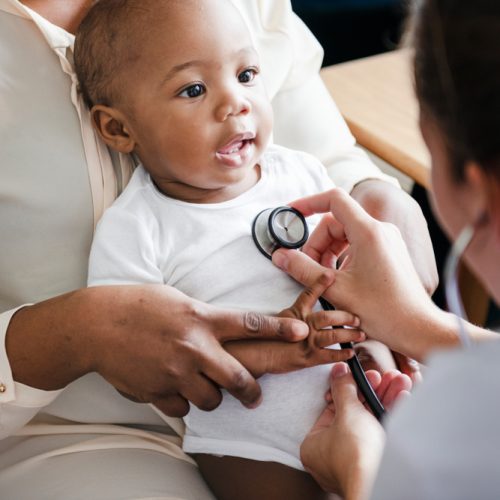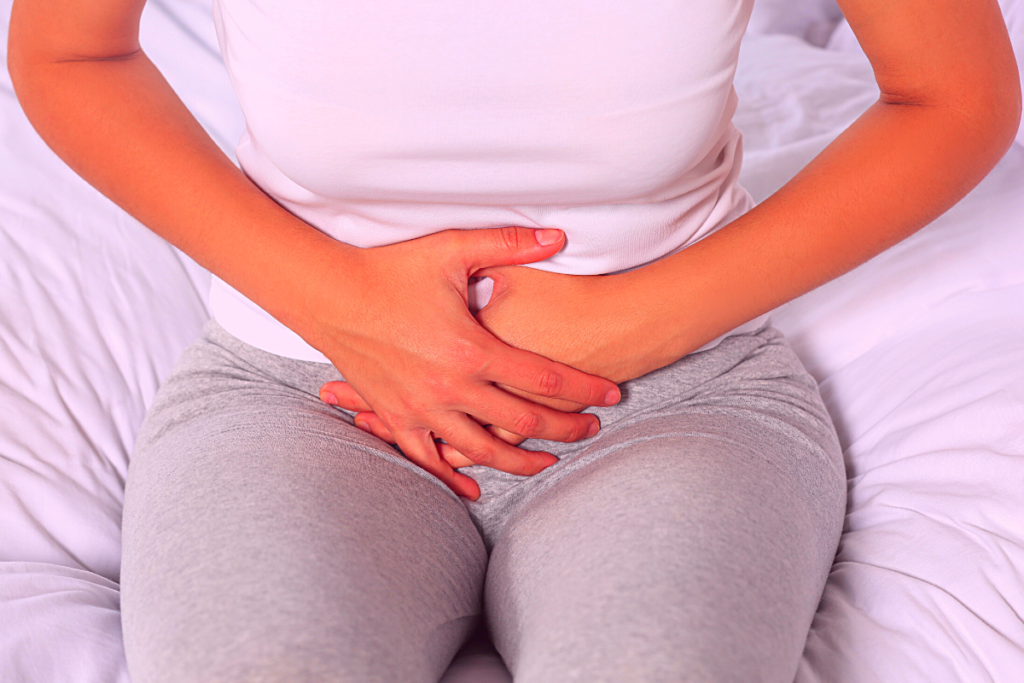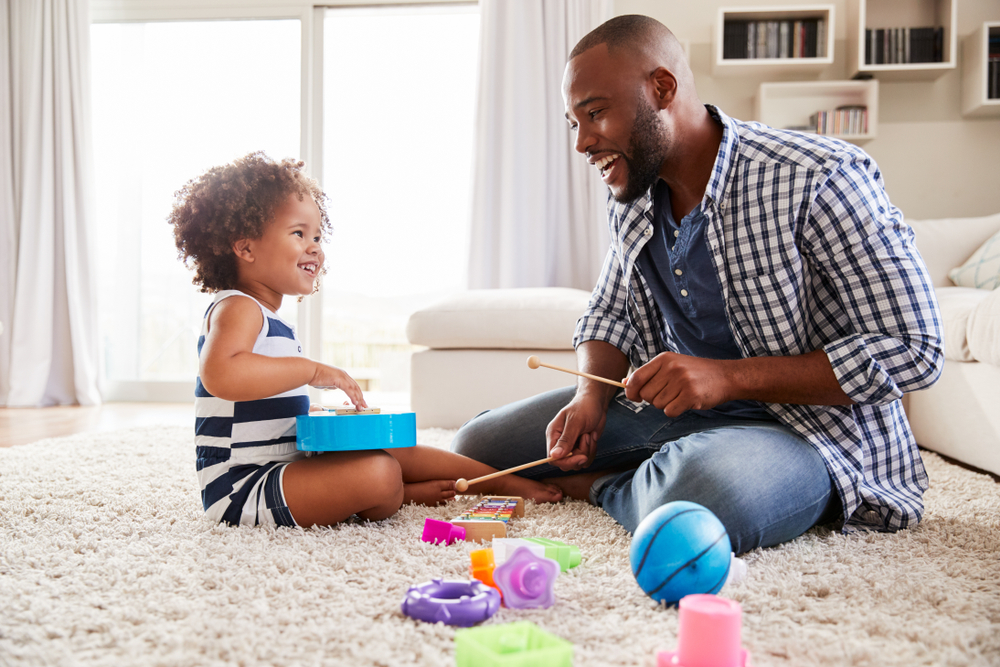This article reviews what different experts say about children who have fevers but no other symptoms (yet). It pulls information from the American Academy of Pediatrics and several major children’s hospitals (see our sources below.)
The main takeaway: Fevers are a symptom of an underlying issue, often an infection. In toddlers or young children, they can start 24 hours before other symptoms kick in (like a runny nose or sore throat). That’s because they are one of the first ways the body starts fighting infection – one theory is that increased temperature makes it hard for infections to live in the body.
Read on where we will cover the possible causes of a fever, especially those without symptoms. We also discuss what a high fever is versus a mild fever (hint: it depends on the child’s age and thermometer/tool you are using…and there is a lot of variation among experts).
Disclaimer: This health information is for educational purposes only. Maternie articles are not written by medical professionals. You assume full responsibility for how you choose to use it. (And never hesitate to contact health care providers with questions!)
Causes of Fever (Without Other Symptoms)
Fever is not an illness itself, but a symptom of an illness. Most sources agree that fever is usually a sign of viral infections or bacterial infection, more often viral.
The American Academy of Pediatrics says a fever may be the only symptom your child experiences for the first 24 hours of a viral infection, before other symptoms, such as a runny nose or cough, appear.
Febrile Seizure Can Happen With No Other Symptoms
One scary thing that can happen with a fever but no other symptoms is febrile seizure. According to the National Institutes of Health, febrile seizures are most likely in children between the ages of six months and five years old, and are at the greatest risk of febrile seizure at age 2. They happen to approximately 2 to 5% of children age five and under in the United States.
They can occur with common child illnesses like a cold or the flu, and sometimes “a child may not have a fever at the time of the seizure but will develop one a few hours later.”
Febrile seizures are not caused by epilepsy, but can look very similar, as your child may lose consciousness and their arms and legs will shake uncontrollably.
The NIH says to call an ambulance and go to the emergency department if a seizure lasts for more than five minutes. Thankfully, they write that febrile seizures under 15 minutes “do not cause any long-term health problems. Those that last more than 15 minutes are “generally harmless but do carry an increased risk of developing epilepsy.”
Tired of looking up what temperature is technically a fever?
Drop your email and we’ll send you a FREE, mobile-friendly graphic that breaks down what temps are technically a fever by your child’s age. Favorite it so you can access whenever!
Other Causes: Roseola, UTIs, Sickle Cell Disease
The American Academy of Pediatrics also writes that Roseola is a “classic case” of unexplained fever in children between six months old and three years old. Typically a child would have a fever for 2 to 3 days, and then it will go away. A rash of small spots then appears on the chest and stomach, eventually spreading to the face. The rash disappears after 1 to 3 days and usually the child feels fine.
Seattle Children’s Hospital says that a bladder infection, also known as urinary tract infections or a UTI, can be a common cause of fever in girls, especially if your child can’t express pain while urinating yet.
Lastly, children with Sickle Cell Disease (SCD) are more likely to get infections, according to Children’s National, especially bacterial infections. They write that fever “may be the first and only sign of infection.” Fevers can be deadly for children with SCD, and should be considered a medical emergency.
What Is a High Fever Versus Mild Fever in Children
There are a few important things to consider when identifying if your child actually has a fever, and then if it is high or mild. First is your child’s age. For infants younger than three months, any fever above 100.4° needs attention from a medical professional or potentially a trip to the emergency room. (Some sources had the cut off for this at two months, but the majority said three months or less.) One of the biggest concerns for young babies is an infection in the blood, which can become deadly quickly.
After that age, most experts viewed a fever as beginning around 100.4°F (some had the “fever” threshold temperature higher, like 101°F from Norton’s Childrens’ or 102°F from the UK’s National Health Service), but not requiring immediate attention unless the fever lasts for a day or more, or if it is accompanied by other symptoms.
Children’s National Hospital had the following breakdown for parents to determine when a fever that needs medical attention includes…
- A child of any age with a high fever above 104°F
- A child under two years with a fever of 100.4°F that lasts for more than one day
- A child two years and older with a fever over 100.4 that lasts more than three days
Fever Threshold Can Also Depend on Thermometer Type
The type of thermometer you are using to take your child’s temperature can also affect temperature readings and how severe they are. Certain methods, like rectal, are more accurate than others, like under the arm measurements.
The American Academy of Pediatrics recommends using a digital thermometer (no old-fashioned mercury thermometers.) They also have the following thresholds for determining a high temperature that is a true fever:
- Ear, forehead, or rectal temperature: 100.4°F
- Oral temperature: 100°F
- Under the arm (armpit) temperature: 99°F
The best way to take their temperature will generally depend on their age. The AAP cautions that ear thermometers are not accurate in babies six months of age or younger. They also recommend not using oral thermometers until your child is four years or older. They have an illustrated guide on how to use a rectal thermometer here.
Keep in mind that your child’s normal body temperature can change throughout the day. The AAP provides this range:
- Normal rectal temperature: Anywhere from 96.8 F in the morning to a high of 100.3 F late in the day
- Normal oral temperature: Anywhere from 95.8 F in the morning to 99.9 F late in the day
Treating Your Child’s Fever at Home
Most sources agreed that the number one treatment for a fever at home is rest and making sure your child does not get dehydrated. You can use an oral rehydration solution, such as Pedialyte, or even ice pops to help ensure they are getting fluids. Signs of dehydration include not urinating frequently, so keep an eye on your child’s wet diapers or trips to the bathroom.
There was variation among sources on exactly when your child may need fever-reducing medication, like Tylenol or Advil. Seattle Children’s says medication is only needed if a fever is over 102 F. They also caution parents not to expect medication to reduce a fever by more than two or three degrees. Lastly, they write that sponging your child with cold water is “rarely needed” and could end up making your child more uncomfortable.
Sources:
Fever without Fear: Information for Parents – HealthyChildren.org
How to Take Your Child’s Temperature – HealthyChildren.org
Febrile Seizures Fact Sheet | National Institute of Neurological Disorders and Stroke (nih.gov)
When to Worry About a Child’s Fever | Sutter Health
Unexplained Fever | Norton Children’s (nortonchildrens.com)
Fevers (for Parents) – Nemours KidsHealth
My Child Has a Fever: What Should I Do? | Children’s Hospital of Philadelphia (chop.edu)



